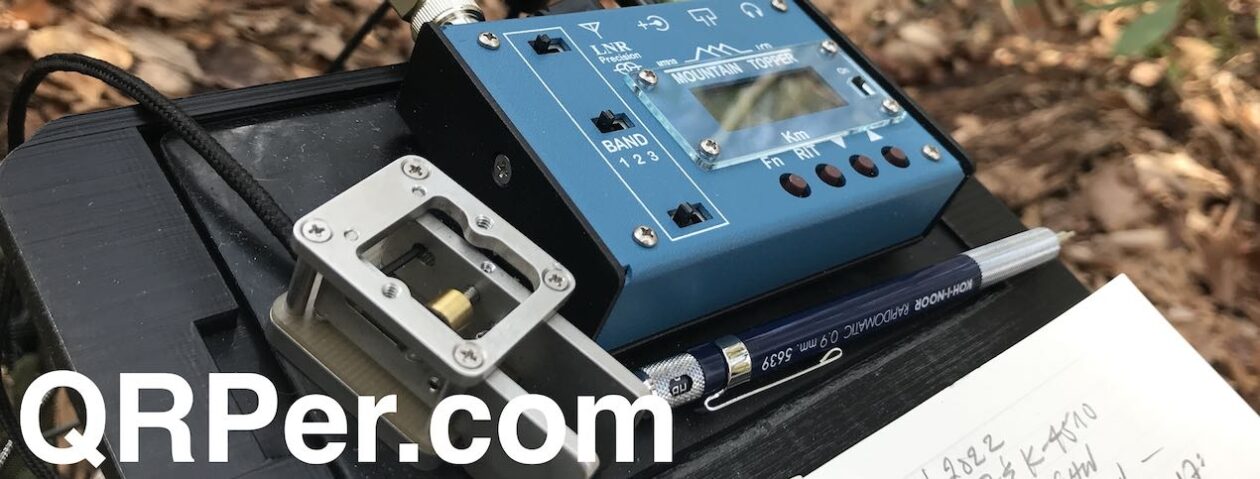If you’ve read my “Anatomy of a Field Kit” series, you’ve likely gathered that field kits are a bit of an obsession. [Yeah, understatement alert!]
My field kits roughly fall into two main categories: modular and fully self-contained. My modular kits are ones where components like the battery, antenna, throw line, key, and radio are in separate pouches and can easily be combined to make a complete station before I leave for an activation.
My fully self-contained kits are ones that quite literally have everything needed to perform a park or summit activation in one pouch or box. A good example that I’ve documented here is my MTR-3B field kit.
For more on this, again, check out my “Anatomy of a Field Kit” series.
Vehicle kit
 If you’re a devoted park and/or summit activator, I think it’s important to keep a dedicated kit kit in your car at all times. Why?
If you’re a devoted park and/or summit activator, I think it’s important to keep a dedicated kit kit in your car at all times. Why?
- It’s ready to grab for impromptu activations
- It’s handy in case of road-side emergencies in remote areas
- It’s always accessible to demonstrate amateur radio to those who are curious
- It’s always always there for those times when you hadn’t planned to play radio, but the opportunity presents itself
I always have a full radio kit in my Subaru and over the years, I’ve changed and adapted it. For the most part, though, it’s been located in the trunk/boot and lives with anything and everything else I keep back there. Sometimes, it’s in the way when we need to fill that trunk space with family items for a trip or when we’re hauling things around town. Other times, it’s floating/sliding around freely in the back.
On long family trips, I’ve been known to store radios under the floor, but it’s a true hassle to remove them because I have to remove anything in the trunk before lifting the floor.

I’ve always wanted a way to store my kit in the car in a dedicated space. In the past, I’ve tried to make a kit that could fit under the driver’s seat–thinking that might be ideal–but there’s very little clearance under it and it’s difficult to remove.
Enter the BROG Headrest Pouch Kit
Before I placed my initial order for the Blue Ridge Overland Gear (BROG) Gadget Bag, I checked out other items on their website. One that immediately caught my attention was their Headrest Kit.
It consists of a Velcro panel that fits around a vehicle headrest and a pouch (or pouches) attach to it.
BROG caters to Overlanders and vehicle storage/organization is huge in that community. The headrest kit makes a lot of sense: it’s using space that’s accessible, doesn’t interfere with any passengers, is off the floor, and is otherwise underutilized!
The big questions, of course:
- would the pouch offer enough space to store an entire radio kit,
- and would the kit weight too much for the Velcro back to hold it in place?
I asked for the Headrest Pouch Kit ($47.99) to be sent with my Gadget Bag order.
BTW: Big thanks to BROG for giving me flexibility with this order. Since I had no experience with their gear, I asked that they send me a list of items and allow me to evaluate them, then pay (full price) for what I decided to keep.
Would it work?
 I knew I’d need to store a very small transceiver in this dedicated pack. A few could potentially fit the bill–namely the:
I knew I’d need to store a very small transceiver in this dedicated pack. A few could potentially fit the bill–namely the:
- Mountain Topper MTR-3B
- Venus SW-3B
- QCX-Mini
- TEN-TEC R4020
I eliminated the QCX-Mini from this list because it’s mono band (mine is set for 20M) plus, I really love the field kit I already designed for it. Same for the MTR-3B–the kit I built for it is now time-tested and I love it as-is. The R4020, while quite compact, is the largest in this group of wee rigs. Continue reading Testing my new Headrest QRP POTA Field Kit!

















































